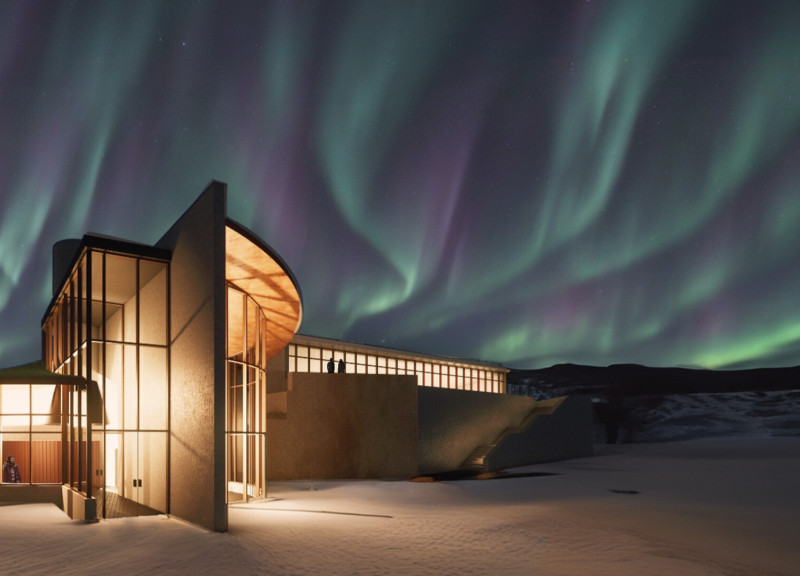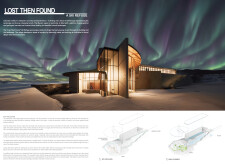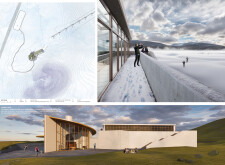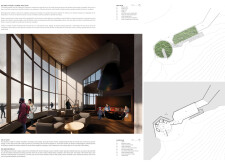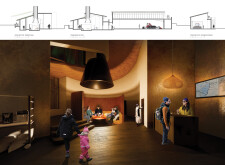5 key facts about this project
### Overview
Located in the Myvatn region of Iceland, the ski refuge is designed to complement the area's diverse geological features, including volcanic terrains and geothermal landscapes. This architectural endeavor emphasizes exploration and self-discovery amid nature, inviting visitors to navigate varying terrains and engage with their surroundings. The design reflects the dual themes of being "lost" and "found," embodying a metaphor for personal and environmental journeys.
### Spatial Configuration and Circulation
The building's form employs a dynamic configuration of curvilinear shapes integrated with more rigid structures, which not only enhances visual interest but also facilitates natural movement throughout the space. Visitors approach the refuge via pathways that blend with the natural contours of the landscape, creating an immersive journey that culminates in strategically placed viewing platforms. These areas offer engaging perspectives of the surrounding terrain and natural phenomena, such as the Northern Lights, while ensuring privacy.
### Material Selection and Sustainability
A carefully curated material palette enhances both the aesthetic and functional aspects of the design. Gabion baskets filled with local stones serve as structural elements, promoting a sense of integration with the environment and regulating thermal properties. The exterior, finished in concrete, echoes the ruggedness of the landscape, while wood accents on the interior foster a warm atmosphere. Large glass panels invite natural light and panoramic views, significantly contributing to the refuge's environmental aspirations. The incorporation of geothermal energy, sunlight-oriented windows, and rainwater harvesting systems further exemplifies a commitment to sustainability, encouraging visitors to connect with the local ecosystem.


